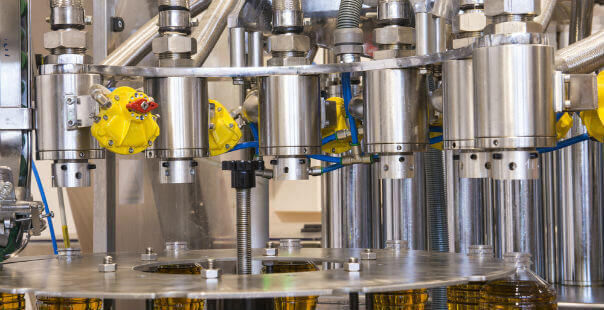
What Is Modified Atmosphere Packaging?
A major challenge food manufacturing industries face is the need to keep their products as fresh as possible for as long as possible. As globalized markets grow and consumers raise their demands for foods that last longer, the need for innovative food preservation methods has become ever more critical to food producers who wish to remain relevant in a highly competitive market.
An increasingly popular solution to food storage concerns is the use of modified atmosphere packaging. This modification of the immediate atmosphere within food packaging can significantly boost shelf life. This article will discuss the concept of modified atmosphere packaging and its relevance to the food processing industry.
What Is Modified Atmosphere Packaging (MAP)?
Per the FDA, modified atmosphere packaging is a control used to affect the environment within packaging by reducing the levels of oxygen. The intention is to preserve the freshness and quality of the contained food for as long as possible.
Modified Atmosphere Packaging vs. Controlled Atmosphere Packaging
While modified atmosphere packaging and controlled atmosphere packaging share many similarities, there are a few subtle variations in what constitutes modified vs. controlled atmospheres.
To begin with, modified atmosphere packaging is used in a broader sense to describe the alteration of the environment in which materials are stored. Modified atmosphere packaging eliminates most of the natural air contained within a stored product and sometimes referred to as gas flushing.
On the other hand, controlled atmosphere packaging involves the alteration of the composition of air within a product packing. Nitrogen, oxygen, and carbon dioxide contents within the packaging are altered to achieve optimal storage conditions. It is also vital that the right temperature and humidity within the storage facility is maintained.
Regardless of the procedure being used, the integrity of the material and environmental storage conditions must be fine-tuned to achieve the best results.

How Does Modified Atmosphere Packaging Work?
As mentioned earlier, modified atmosphere packaging can be achieved by active and passive methods. Active modified packaging involves the introduction of a desired gaseous mix into the packing environment to achieve a longer shelf life. Conversely, passive methods of modified atmosphere packaging require the use of special films to wrap the products to be preserved, therefore regulating the temperature, humidity, and the rate of diffusion of gases within the packaging.
Advantages of Modified Atmosphere Packaging
The benefits of modified atmosphere packaging for the storage and transport of food products include:
- Prolonged shelf life compared to other conventional storage methods
- Improvement in visual appeal of packed products
- Preservation of food nutrients
- Prolonged preservation of food freshness
- Elimination of chemical additives/preservatives
- Retention of original food flavors
Types of Modified Atmosphere Packaging
The most useful types of modified atmosphere packaging are outlined below.
Barrier Films
The use of barrier films is a passive means of modified atmosphere packaging. Special films made of materials like polyvinylchloride (PVC), polypropylene (PP), and low-density polyethylene (LDPE) are currently approved by the FDA for this purpose. Additionally, new smart film technology provides wrapping with indicators that relay information on food quality, storage temperature, and alert users to the presence of leaks.
Desiccant Packs
Desiccant packs or oxygen scavengers are an effective method of modifying the environment within a modified atmosphere package. Small desiccant packets (typically a mixture of ascorbic acid, activated carbon, and iron powder) can be introduced into the modified atmosphere packing to absorb excess moisture and oxygen from perishable food items.
One-way Packaging Valves
Another innovative modified atmosphere packaging technique involves the addition of one-way valves on product packaged with films. These valves will allow a one-way movement of gas out of the packing. This method allows the escape of gases produced by the food products preventing build ups that might reduce their shelf life.
Gas Flushing
For food and beverage processing plants involved in large scale operations, the use of gas flushing is usually the most effective modified atmosphere packaging technique. Due to its non-reactive nature, the most employed gas used in flushing is nitrogen.
Using nitrogen in food packaging helps remove oxygen and other impurities from production equipment and also as a filling gas within the food packaging itself. The inert nature of the gas will ensure that it does not alter the quality of the packed food materials while preventing oxidative processes and the growth of microorganisms that cause food spoilage.
Common Modified Atmosphere Packaging Gases
The most common gases for modified atmosphere packaging are nitrogen, carbon dioxide, and argon. These gases are selected based on their inertness and anti-microbial properties.
Is Nitrogen Flushing Bad for You?
When applied under the appropriate conditions and in the right quantities, the nitrogen gas used in gas flushing poses no health risk to consumers. As usual, that statement only holds true if the contained foods are consumed before the stated expiry dates.
NiGen Has Industrial Air Solutions
At NiGen, we offer a broad range of turnkey industrial air solutions to the clients we serve. Our process air equipment supply and installation services are designed for a diverse range of manufacturing industries and include on-site nitrogen generators, air compressors, heatless desiccant dryers, air coolers, and high-pressure boosters.
Contact us online today for a quote, or to learn more about our services.
